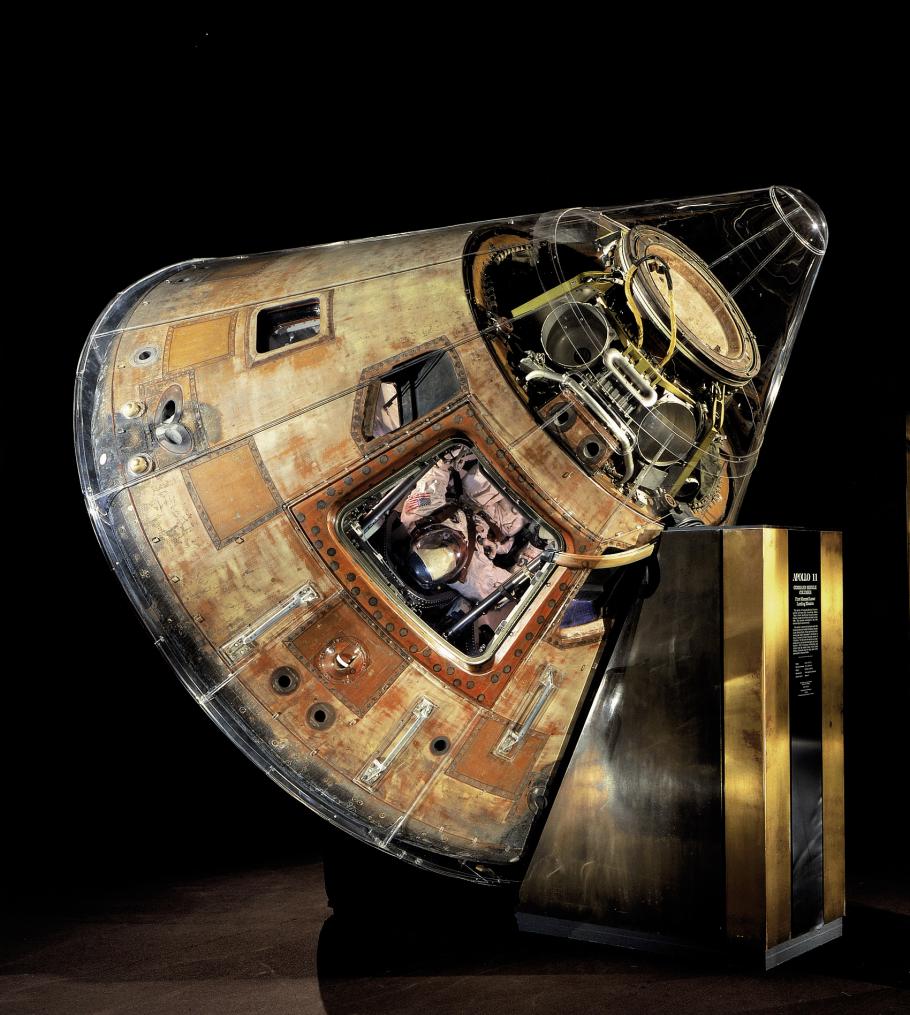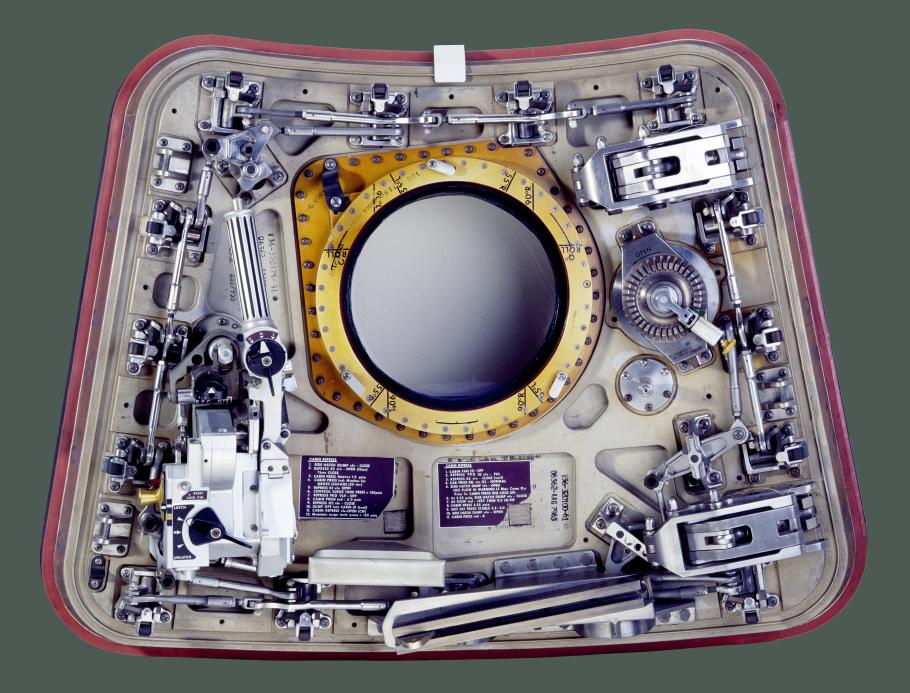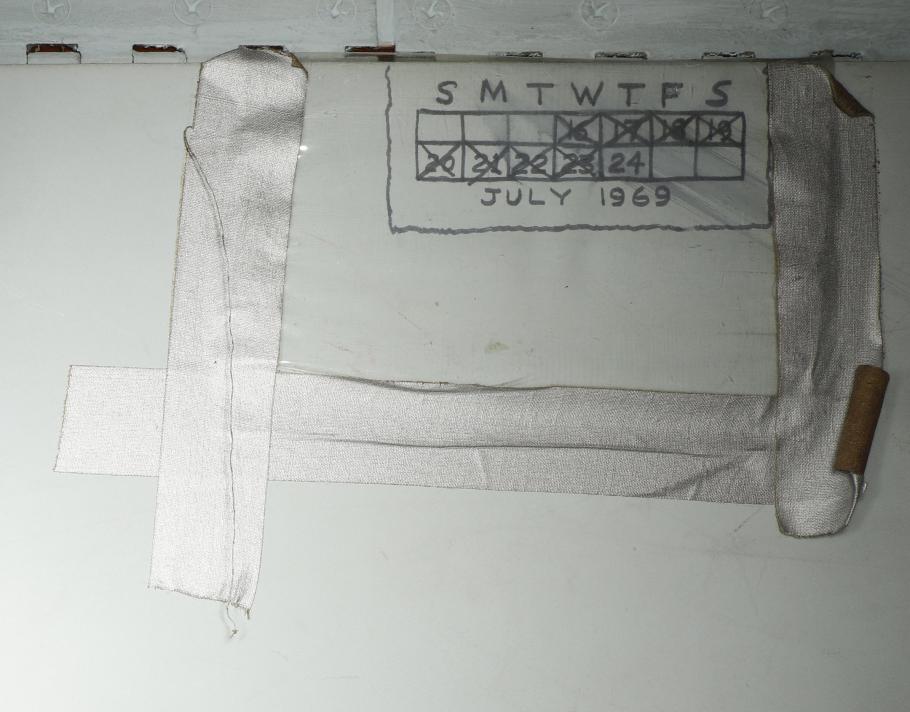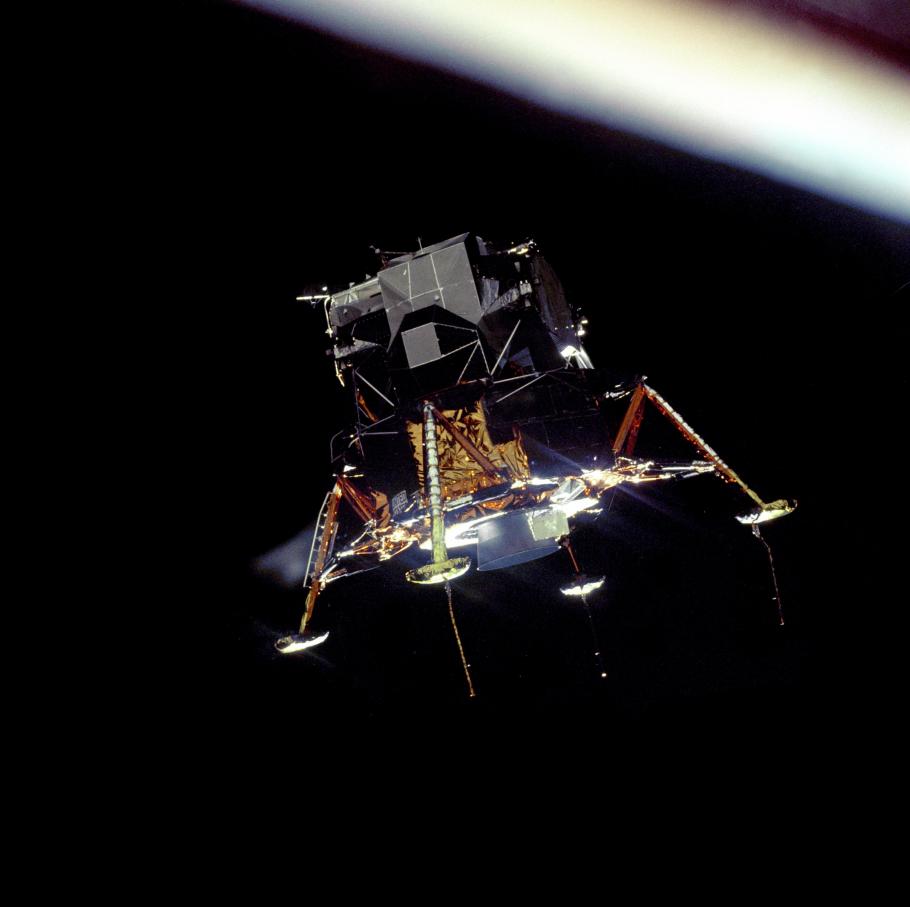Traveling to the Moon and returning required three unique and technologically advanced pieces of spacecraft, from the Saturn V rocket, to the Command Module, Columbia, and the Lunar Module, Eagle. Click a link below to learn more about each technological feat that made it possible to land an American on the Moon.
Introduction Saturn V Command Module, Columbia Lunar Module, Eagle
Saturn V
When President Kennedy proclaimed that Americans would put a human on the Moon by the end of the decade, there wasn't a rocket that could get someone there. The engineering feat of the Saturn V rocket made it possible for astronauts to travel to the Moon. For five decades, the Saturn V remained the United States’ largest and most powerful launch vehicle ever built.
Command Module, Columbia
The Apollo 11 Command Module Columbia carried astronauts Neil Armstrong, Edwin "Buzz" Aldrin, and Michael Collins on their historic voyage. During the journey to and from the Moon, Columbia—its interior space about as roomy as a large automobile—served as main quarters for the astronauts, a place for working and living.
The Design
The blunt-end design for the Command Module was chosen to build upon experience gained with the similarly shaped Mercury and Gemini spacecraft. The spacecraft reentered the atmosphere with its protective heat shield (the widest end of the spacecraft) facing forward. Layers of special "ablative" material on the shield were purposely allowed to erode away during reentry to help dissipate the extremely high temperatures caused by atmospheric friction.
The Hatch
This single hatch could be opened outward in five seconds by pumping the handle to activate a pressurized nitrogen cylinder. Prior to the tragic fire in January 1967 in which three astronauts died, there were two hatches on the Apollo command module requiring 90 seconds to open.
Writing on the Wall
During the course of a project to produce a detailed 3D model of the Apollo 11 Command Module Columbia, conservators were able to observe and record some hand-written notes and markings in areas of the spacecraft that have been hidden from view for more than 40 years. The notes, figures, and a calendar tell us something about what life was like on the way to the Moon and back.
Lunar Module, Eagle
The Lunar Module (LM), Eagle was used for descent to the lunar surface and served as a base while the astronauts were on the Moon. A separate ascent stage, comprising the top portion of the Lunar Module, lifted the astronauts from the Moon's surface to rendezvous and dock with the command module, orbiting the Moon. Because lunar modules were designed to fly only in the vacuum of space, they did not have to be streamlined like an aircraft or carry a heat shield for protection during reentry.
The lunar module had two stages (sections).
Descent Stage
The gold-and-black descent (lower) stage was equipped with a rocket motor to slow the rate of descent to the lunar surface.
The descent engine supplied the power for the complex maneuvers required to fly the lunar module from orbit down to a soft landing on the Moon. The engine was fired as a retrorocket to slow the lunar module, allowing a controlled descent to the surface.
It contained exploration equipment and remained on the Moon when the astronauts left.
Ascent Stage
A silver-and-black ascent stage contained the crew's pressurized compartment and the clusters of rockets that controlled the spacecraft.
The ascent (upper) stage contained the crew compartment and a rocket motor to return the astronauts to the orbiting command module.
To rejoin the command module, the astronauts fired the ascent-stage rocket engine and lifted off, leaving the descent stage on the Moon. The ascent stage met and docked with the command module in lunar orbit. The ascent stage then was programmed to crash into the Moon.
The Apollo 11 Lunar Module Eagle, in a landing configuration, was photographed in lunar orbit from the Command and Service Module Columbia. Inside the module were Commander Neil A. Armstrong and Lunar Module Pilot Buzz Aldrin. The long rod-like protrusions under the landing pods are lunar surface sensing probes. Upon contact with the lunar surface, the probes sent a signal to the crew to shut down the descent engine. Credit: NASA
The Material
Several materials cover the spacecraft to protect its inner structure from temperature and micrometeoroids. Specially designed materials maintain temperature balance inside the craft.
The ascent stage of the lunar module features heat-resistant nickel-steel alloy, 0.0021072 millimeters (0.0000833 inches) thick. Sheets that are painted black absorb heat when exposed to the Sun and radiate to the blackness of deep space.
On the descent stage of the lunar module the material is not metal foil, but plastic films that are thinly coated with aluminum, which reflects the sun's heat and insulates the spacecraft. The thin, gold-colored films are used in "blankets" of up to 25 layers. All of the plastic films protect the spacecraft from micrometeoroids
This photo shows the cockpit of the Lunar Module 2 (LM2). It is nearly identical in appearance to the cockpits of the lunar modules used to land on the Moon. The two astronauts stand before the windows as they control the craft during descent to the lunar surface, and later, during ascent from the Moon. The Commander on left and the Lunar Module Pilot on the right each have two control sticks for controlling the vehicle. The left stick maneuvers the LM; the right one controls spacecraft attitude (orientation). Between them a computer keyboard. On the center panel are various instruments and two black-and-white "eight-ball" attitude indicators. A window over the Commander's head aids docking with the Command Module.
Sixteen rockets that can be fired automatically or manually control the attitude of the lunar module. The descent engine's thrust is 44,316 Newtons (9870 lbs) maximum, and the ascent engine's thrust is 15,700 Newtons (1050 lbs).



